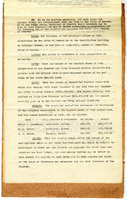Search the Special Collections and Archives Portal
Search Results
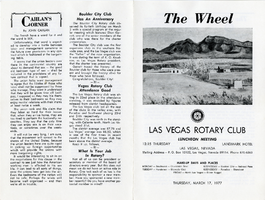
The Wheel Las Vegas Rotary Club newsletter, March 17, 1977
Date
Archival Collection
Description
Text
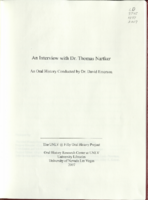
Transcript of interview with Dr. Thomas Nartker by Dr. David Emerson, November 13, 2006
Date
Archival Collection
Description
Text
Pueblo Grande de Nevada Manuscript Collection
Identifier
Abstract
The Pueblo Grande de Nevada Manuscript Collection (1924-1983) contains journal articles, photocopies of artifact inventories, reports, correspondence, and field notes related to the Pueblo Grande de Nevada archaeological site located in the Overton Valley of Southern Nevada. The bulk of the materials are related to Mark R. Harrington's archaeological reports, journal articles, and data from sites throughout the Overton and Moapa valleys. The collection also includes materials related to the Boulder Dam Park Museum (Lost City Museum of Archaeology) located in Overton, Nevada, which housed many of the artifacts and photographs from Harrington's archaeological sites.
Archival Collection
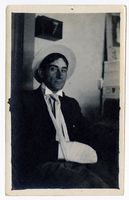
Photograph of Dalta Hurry with his arm in a sling, Goldfield (Nev.), 1907
Date
Archival Collection
Description
Image
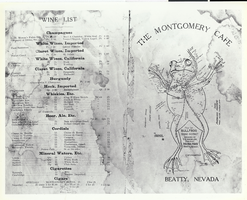
Photograph of a menu from the Montgomery Cafe, Beatty, Nevada, circa 1950s
Date
Archival Collection
Description
Image
Sanchez, Tony F., III, 1966-
Tony F. Sanchez III was born in the Las Vegas’ Women’s Hospital. It was 1966 and the plot of land the hospital sat on near Eastern and Sahara streets was considered rural. It was on the desert of the east Las Vegas that young Tony would grow up, graduate from Valley High School, and then graduate from University of Nevada, Las Vegas.
Person
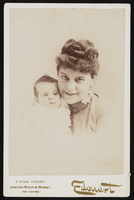
Mrs. Littell, wife of W.A. Littell, and a baby: photographic print
Date
Archival Collection
Description
Image


